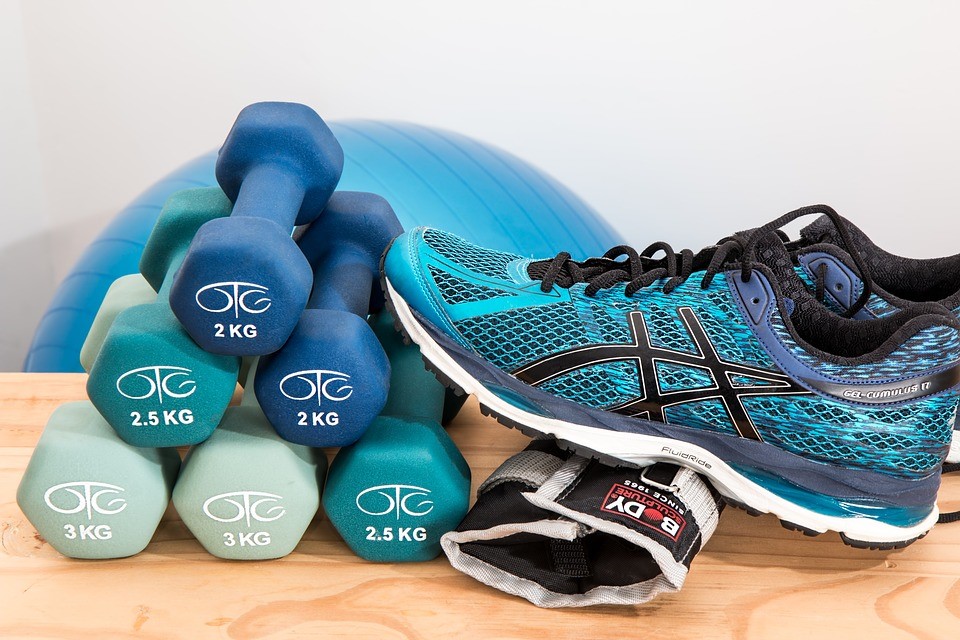When Can I Return to Exercising? The Timeline of Rotator Cuff Rehab – Intermediate Phase (Weeks 6-12)
Congrats! You made it through the first 6 weeks after your rotator cuff surgery and things are looking up! At this point, your pain is most likely controlled and you no longer need medication, your passive range of motion is nearly back to normal, sleep is finally comfortable again and you are getting a full night’s rest, you’ve finally gotten out of that sling and can start moving your arm again, and you are enjoying getting back to work!

If you’ve just had your rotator cuff surgery or are waiting to have your surgery and want to know what to expect following surgery, check out the previous blog on what to expect during the early phase (week 1-6) of rotator cuff rehab.
To review, the goals you should have accomplished in the early phase of rotator cuff rehab is maintain integrity of the repair, achieve full or near full passive ROM, discontinue use of sling, and fully managed pain and inflammation. The intermediate phase lasts from weeks 6 through 12, and the most important goals to achieve during this phase include:
- Achieve full active ROM
- Maintain full pain free passive ROM
- Gradual restoration of rotator cuff and scapular strength and endurance
- Achieve dynamic shoulder stability
- Gradual return to functional activities

This is a great time because you finally get to feel like you’re getting function back in your shoulder rather than just letting it sit in a sling. So will you be ready to get back to the gym during this stage?

Not likely. Although the pain starts to go away during this intermediate stage, the rotator cuff tendon is still healing and caution is needed to reduce stress on the tendon so that it can fully heal at the attachment site!
It takes about 6-8 weeks for the rotator cuff tendon to initially scar down and heel to the bone or suture site (which is why doctor’s place you in a sling and tell you to not actively use your arm for 6 weeks!) This initial patch of scar tissue slowly gets re-absorbed by the body and replaced with stronger Type I collagen fibers. At about 3 months out from surgery, the tendon has a relatively strong connection to the bone or suture site and can start withstanding some resistance training. It takes about 6-9 months before the tendon is fully attached to the bone and ready for more aggressive strengthening, plyometric movements, or sport activities.
So what should you expect to be doing in weeks 6 though 12? Well most likely your physical therapist will have you start off by doing active assistive range of motion (AAROM) exercises. These are exercises in which you get to start moving your post-surgical shoulder with the help of your other arm or assistive device such as a pulley or stick. This allows you to start using the shoulder muscles that help move your arm without placing too much stress on the repaired tendon.

After about 8 weeks post-op, the therapist will have you move from active-assistive ROM to active ROM where you get to move the arm by itself guided by pain levels. You will also begin gentle rotator cuff isometrics and continue to strengthen the scapular muscles that help you move your arm overhead. Things to avoid during this intermediate phase are pushing the arm into painful ranges of motion, lifting or pushing weight greater than 5 lbs, and no sudden or quick arm motions.
This means you still need to be careful on what you pick up (a gallon of milk is too heavy) and eliminates most gym activities as they are still too stressful on the healing tendon. Although you cannot swim, it is okay to get in the shallow end of the pool and move around for gentle shoulder ROM and light resistance from the water. Getting on a traditional exercise bike will put too much pressure on the shoulder if you are leaning on the handle bars, but you can ride a recombinant bike in order to achieve a good cardiovascular workout. Running, jogging, and many cardio classes are also not advised during this phase as the shock from jumping places a quick pull on the rotator cuff muscles.
By the end of 12 weeks, you will most likely have an exercise program that continues to work on full active and passive ROM, gentle resistance band exercises for strengthening scapular and rotator cuff muscles consisting of rowing, elbow flexion/extension, shoulder external/internal rotation, light weighted scaptions, and prone scapular stabilization drills.

Hopefully this gives you a better picture on what to expect following a rotator cuff repair from week 6 to week 12. Again, this is a general progress of what most people can expect, but your surgeon may modify and either put you on an accelerated protocol or a more conservative protocol based on the size, location, and tissue quality of the tear.
If you’re interested to find out what to expect in weeks 12-26 (the late phase) following surgery, stay tuned for the next blog as we will discuss what activities most clients begin performing during this time period.
The therapists here at Competitive Edge Physical Therapy love educating clients on the most up-to-date evidenced based treatment options and creating a community where people can ask and get answers online. If you have any specific questions regarding shoulder rehab, or would like help making informed decisions about your health, contact us at Competitive Edge Physical Therapy for a free consult!
- Namdari S, Baldwin K, Ahn A, Huffman GR, Sennett BJ. Performance After Rotator Cuff Tear and Operative Treatment: A Case-Control Study of Major League Baseball Pitchers. Journal of Athletic Training. 2011;46(3):296-302.
- Weiss LJ, Wang D, Hendel M, Buzzerio P, Rodeo SA. Management of Rotator Cuff Injuries in the Elite Athlete. Current Reviews in Musculoskeletal Medicine. 2018;11(1):102-112. doi:10.1007/s12178-018-9464-5.
- Edwards P, Ebert J, Littlewood C, Ackland T, Wang A. Systematic Review of Electromyography Studies in Normal Shoulders to Inform Postoperative Rehabilitation Following Rotator Cuff Repair. Journal of Orthopedic and Sports Physical Therapy. 2017; 47(12): 931-944.
